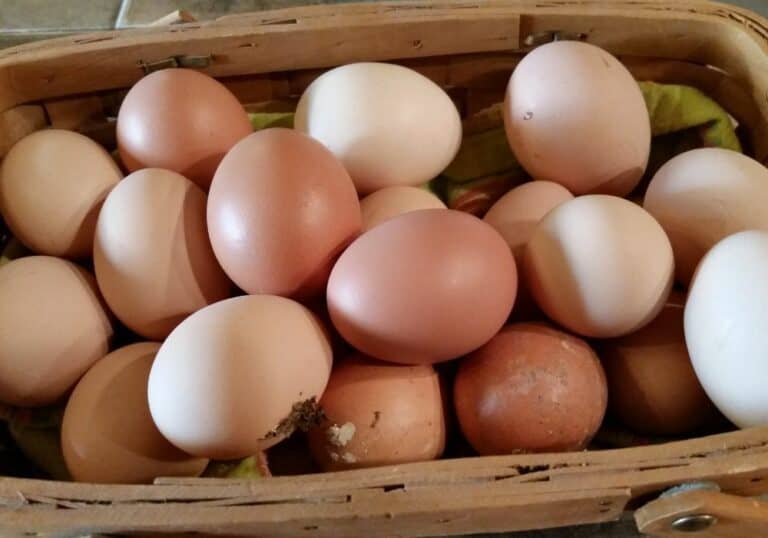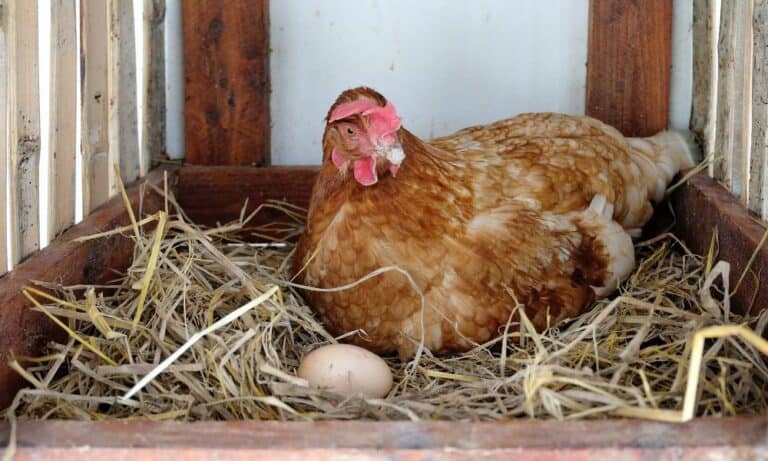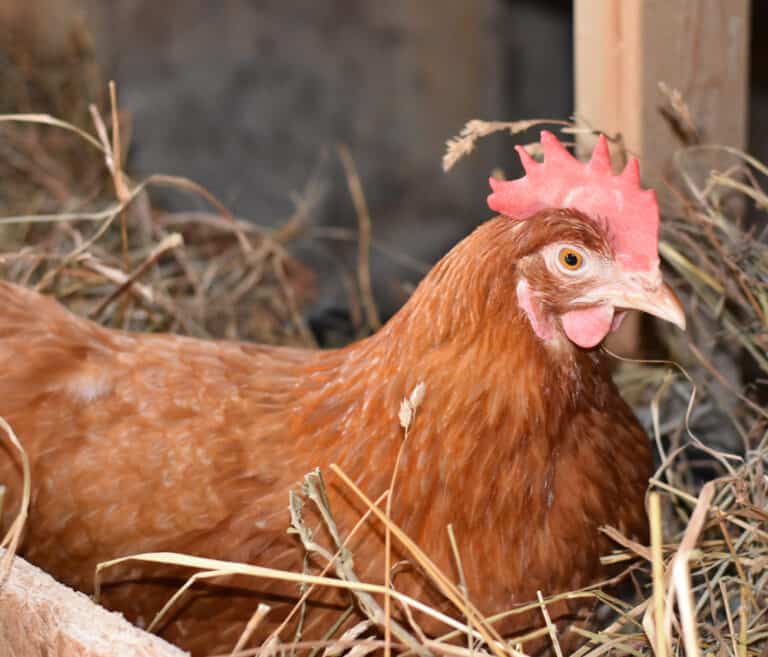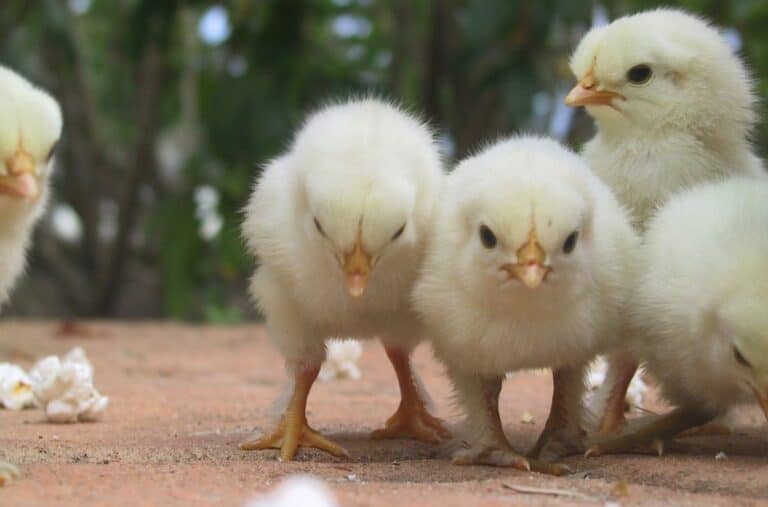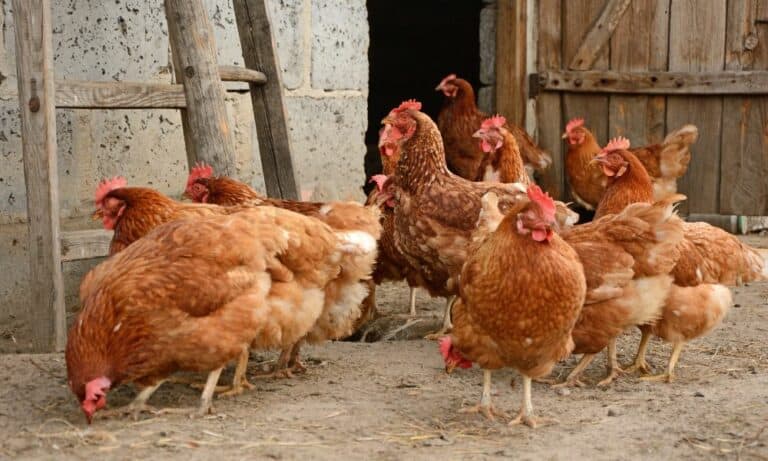Whether you are an avid gardener that wants to go organic or a plant mom looking to grow your very own vegetable garden, eco enthusiasts and well-meaning gardening magazines would have probably tried to sell you on chicken poop. But does chicken poop make good fertilizer?
Chicken poop is, in fact, an excellent fertilizer. Standing as the prominent component in chicken manure (a mixture of chicken poop, chicken feathers, coop debris, shavings, and organic matter), chicken poop has at least twice the phosphorus, potassium, and nitrogen content as seen in cow manure. Complete chicken manure is great for your flower beds and even better for vegetables.
While fresh chicken manure is a nutrient-packed organic manure, it is a danger to animals and plants alike as it contains a nitrogen-rich base that provides the best grooming ground for pathogens.
These effects are typically mitigated by composting and aging. However, this might be a little tricky to navigate and especially hard for newbies. Thankfully, this article provides a guide to navigating chicken poop as a fertilizer and just what it means for your garden.
Composting With Chicken Manure for Beginners
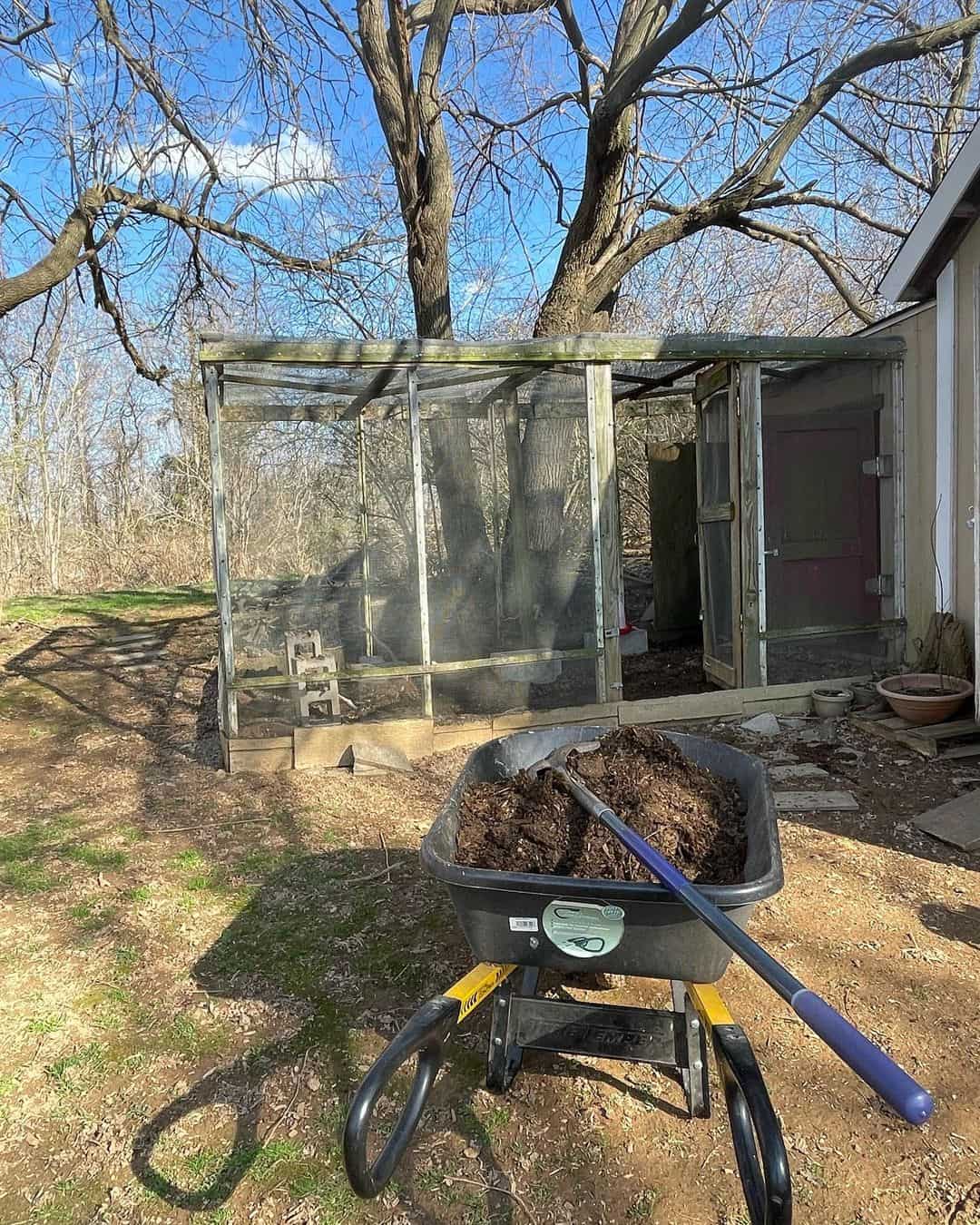
Chicken manure isn’t just a sustainable alternative to synthetic fertilizers, it stands as a soil amendment— improving soil structure, water-holding property, and drainage capacities.
However, uncomposted chicken manure isn’t safe for plants; this Nitrogen-rich manure can burn through leaves and damage plants. In addition, fresh manure from chickens isn’t a danger to plants alone; they also threaten humans and animals alike, as uncomposted manure carries disease-causing organisms like Salmonella and Cryptosporidium.
To safely apply chicken poop to your garden, you’d need to ensure it goes through a proper composting process.
Below, we highlight the two most prominent methods used in manure composting.
1. Hot Composting
Hot composting is a popular chicken manure composting method that involves the optimization of microbial activity in the compost pile. In hot composting, you’d usually want to pay attention to the size of the pile forming the compost.
Although one cubic yard is largely assumed to be a decent size, a general rule of thumb when composting is to keep it big, as a too-small pile wouldn’t provide the heat required to get the results you desire.
The compost pile would eventually be placed in the sun, at which point you’d want to heap up the chicken manure or, if you are feeling a little creative, you could build a simple wire fence from the ground up.
To achieve the perfect chicken poop compost, you’d also need to keep an eye out on the moisture content of the litter (pile) and monitor soil temperature while actively turning the compost.
For optimal bacterial activity, we recommend keeping the compost temperature between 130 degrees Fahrenheit to 150 degrees Fahrenheit. You can usually ascertain this by employing a pile thermometer or feeling through the coop litter for the temperature of the litter.
The hot composting process is complete after 45-60 days of curing. Finally, you can apply the compost to your garden or flower bed, however, you must use this hot compressed litter within 1 year of hot composting, or else its effectiveness as a manure is depleted.
2. Cold Composting
Where hot composting requires specific temperatures to be maintained to output the adequately composted chicken poop, the cold composting process has no thermal stipulation. This method is also dubbed as passive composting and the process is hinged on the organic and comparatively slow decomposition of manure over time.
Here, chicken poop is collected with chicken coop debris into a pile, with little or no oxygen making it into the pile. Cold composting conditions are too extreme to allow for rapid growth. Instead, it sees an increase in fungi-induced decomposition.
Due to the Volatile Chemical compound increase, the cold compost litters are more likely to reek than the hot compost heap.
How to Make Compost with Chicken Poop?
Chicken manure might be black gold for your home-grown vegetables, but they require a bit of maneuvering to be presented as a plausible option for your garden. Composting with chicken poop is a great way to turn waste into a valuable fertilizer for your garden. Here’s a guide to composting with chicken poop:
Step 1: Collect the Chicken Manure
Scrap and collect chicken waste from the coop using a bucket or compost bin. You’d want to make sure to transfer it to a container large enough to hold waste.
Step 2: Mix With Carbon-Rich Materials
Without composting the manure, the high nitrogen content is, in fact, harmful to the plants. Incorporating carbon-rich materials like straw, dried leaves, sawdust, and coop debris will help prevent the compost from becoming too smelly and reduce the risk of harmful gas emissions.
Compost components are typically defined in brown and green waste, where the bedding material, leaves, and coop debris are said to be brown, while the manure and kitchen scrap are referred to as green waste.
You might be tempted to wing the process of mixing the brown components with the carbon-rich green, however, a safe proportion is the 2:1 ratio.
Step 3: Add Water
Add water to the compost pile to keep it moist. Chicken manure has a high moisture content, so it’s important to monitor the moisture level and add water as needed. We also recommend adding water to ensure the consistency is just right to allow easy mixing.
Step 4: Apply Heat
To break down the disease-causing soil bacteria, heat up the chicken litter until the compost thermometer reads anywhere between 130 degrees Fahrenheit and 150 degrees Fahrenheit. You’d want to keep turning the chicken litter to promote the ultimate breakdown of manure as regularly turning ensures that the compost is evenly mixed and stays properly aerated.
Step 5: Use the Compost
Composting takes anywhere between three to six months. Once the chicken manure has fully composted, it can be used as a nutrient-rich fertilizer for your garden.
N.B: This guide employs the hot composting method as it outputs ready-to-use compost within weeks, while the cold compost may take a year or longer.
How to Store Chicken Poop for Manure?
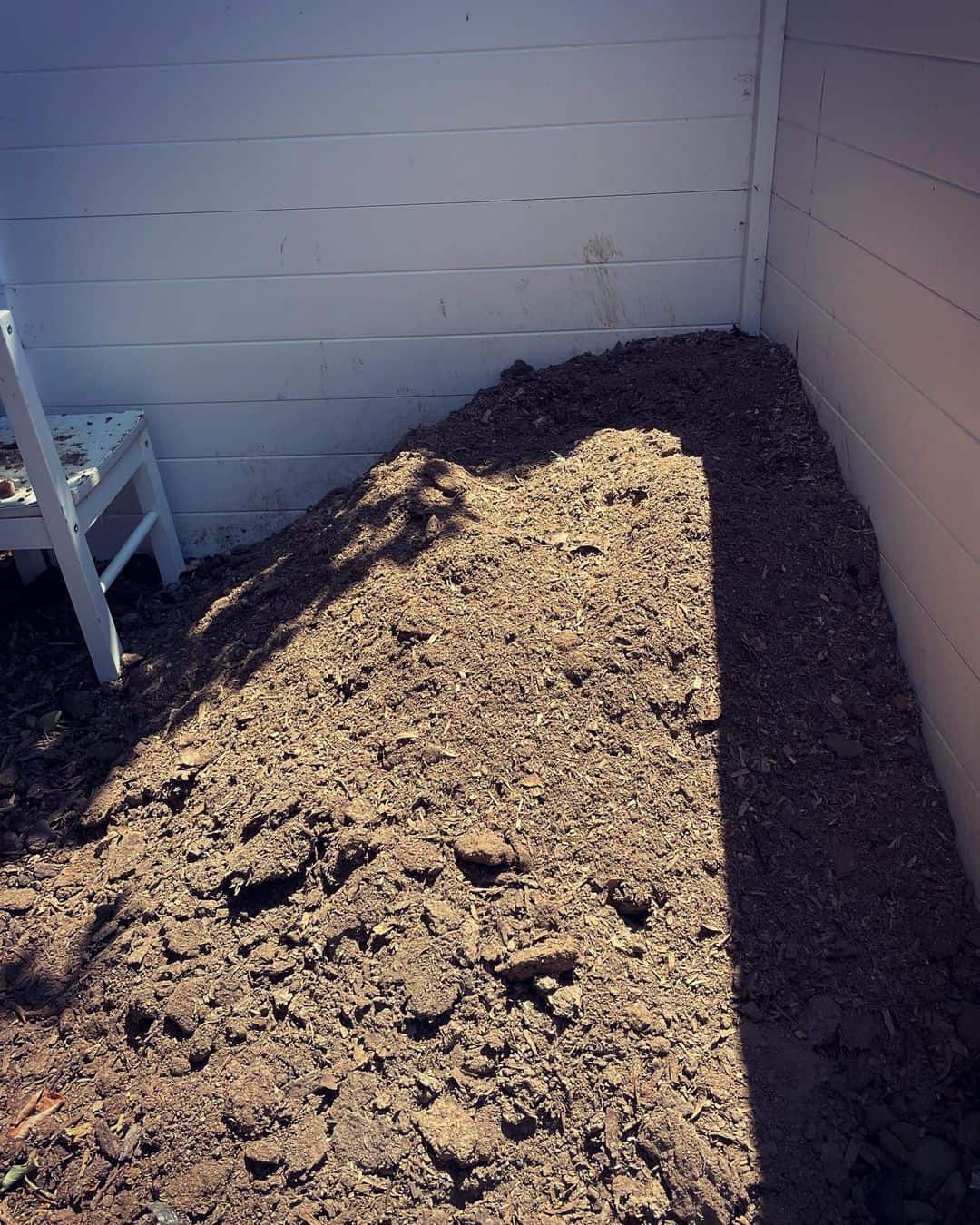
While Chicken poop might be great for gardens and greens alike, they are known to give off an unpleasant smell over time. They are also known to become contaminated upon contact with water.
Properly stored litter doesn’t just help optimize for maximum chicken litter value, they also keep the litter nutrient from leaching.
Below, we outline steps to help you store your chicken poop reserve better
Step 1: Choose a Suitable Location
Select a location that is well-drained and away from water sources such as rivers, streams, or wells. The site should also be away from sensitive areas like residential areas, public spaces, or places that can easily get contaminated.
Step 2: Prepare the Site
Ensure that the site is level and has a stable base. Cover the base with gravel or sand to prevent the manure from leaching into the ground.
Step 3: Use a Liner
Use a liner such as plastic or geotextile to prevent the manure from coming into contact with the soil. The liner should be strong enough to withstand the weight of the manure and any heavy equipment that may be used.
Step 4: Build the Stockpile
Now, build the stockpile in layers, starting with a layer of straw, sawdust, or other absorbent materials to help absorb excess moisture. Alternate layers of manure with a bulking agent such as straw, hay, or wood chips to improve aeration and reduce odor.
Step 5: Cover the Stockpile
Cover the stockpile with a tarp or other impermeable material to prevent rainwater from entering and to help control odors. Ensure the cover is secured to prevent it from blowing away in windy conditions.
Step 6: Manage the Stockpile
Monitor the stockpile regularly to ensure that it is not too wet or dry and that it is not producing excess odors. Turn the pile regularly to improve aeration and reduce the risk of hot spots.
Step 7: Plan for Removal
Have a plan in place for removing the manure from the stockpile, including a schedule for removal and a plan for spreading or disposing of the manure. Composting the manure before use can also help reduce odors and improve its value as a fertilizer
Methods of Stockpiling Chicken Manure
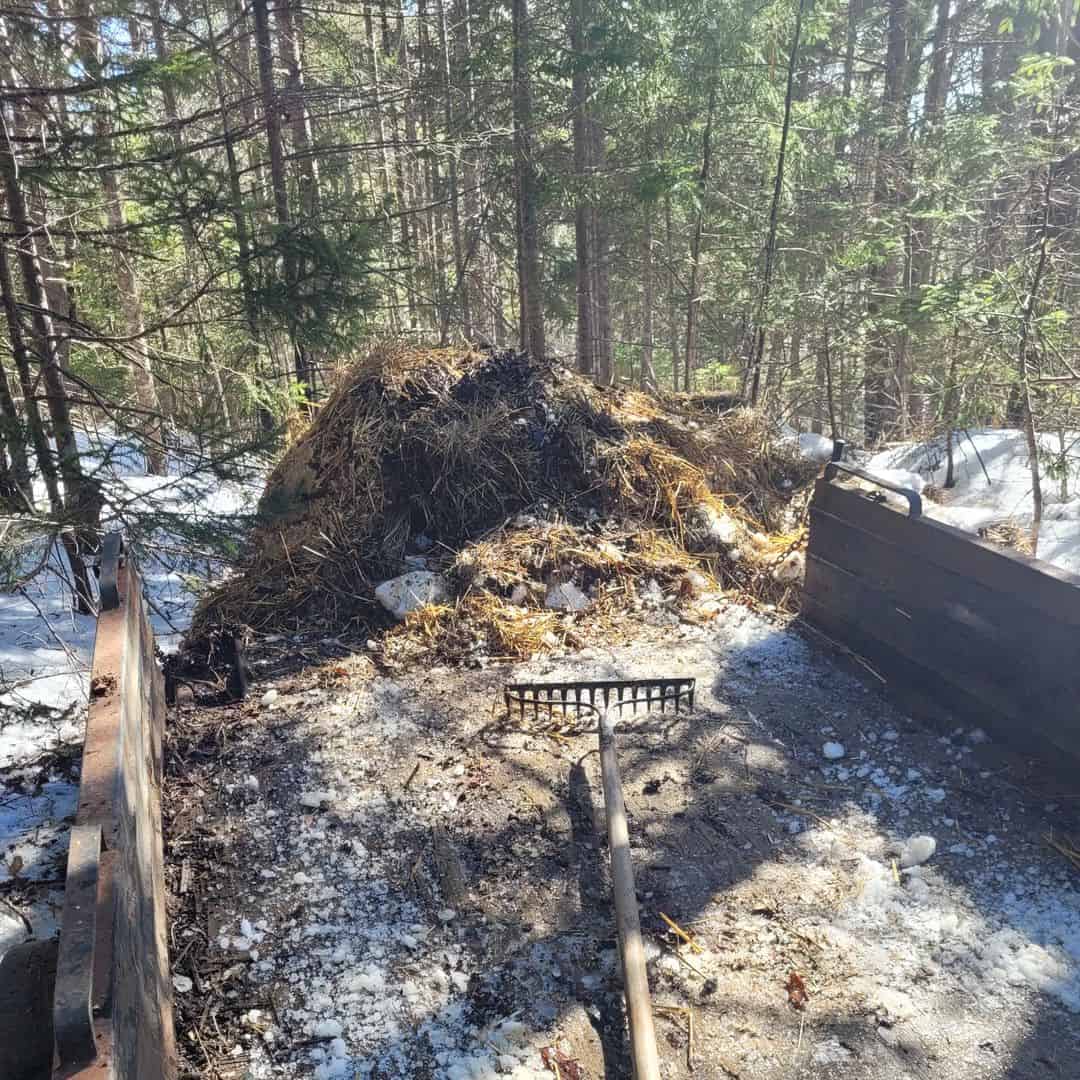
Stockpiling is an essential aspect of poultry farming as it not only helps to manage waste materials but also contributes to sustainable agriculture practices.
Various methods are available for stockpiling chicken manure, and each has its unique advantages and disadvantages. This section will discuss some of the methods used for stockpiling chicken manure and their benefits to poultry farmers and the environment.
1. Covered Stockpiles
What are covered stockpiles, you ask?
This method is great for chicken litter and other animal manure alike. Here, Stockpiles of chicken manure are shielded from rain and erosion by stretches of plastic sheeting rooted in the earth.
It is not uncommon for other designations of the contraption to anchor the contraption to the rubber tires. While this method might not be the most eco-friendly option, it offers an inexpensive means for storing your chicken poop.
Typically recommended as a temporary storage option, this method requires locations far away from the beaten track or drainages which empty into drainages. Ditches and berms generally are recommended to prevent surface water from running into the stockpile.
2. Stockpiles with Ground Liners
While the covered stockpile requires high and relatively isolated drainages, chicken feed piles placed on high water tables soils require a ground liner.
A liner is anything from a 6mm sheet of plastic to a concrete slab with a permanent cover. Ground liners are used to prevent leaching of nutrients into the groundwater. Leaching typically occurs when a large chunk of the poultry pile is used, unused poultry pile is subsequently left uncovered. To prevent leaching, scoop as much chicken debris as possible.
3. Permanent Storage Structure
Although these are typically recommended for larger poultry litters, they are generally regarded as the most practical method for storing chicken poop. They come with concrete floors and an overhead roof to protect the chicken coop from the rain. The roof is a stretch of metal supported by anything from beams and perimeters to outside walls.
When erecting permanent storage structures, you’d want your roof height to account for chicken poop litter piling and machine operation.
Final Thoughts
Chicken poop is an eco-friendly fertilizer packed with nutrients required to help grow your vegetables. However, you’d need to age fresh manure to protect your plants from ammonia burns. Where hot composting requires heating at a constant temperature, cold composting has no such stipulation.
Still got questions about Chicken poop and fertilizers? Be sure to leave them in the comment section below.


